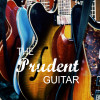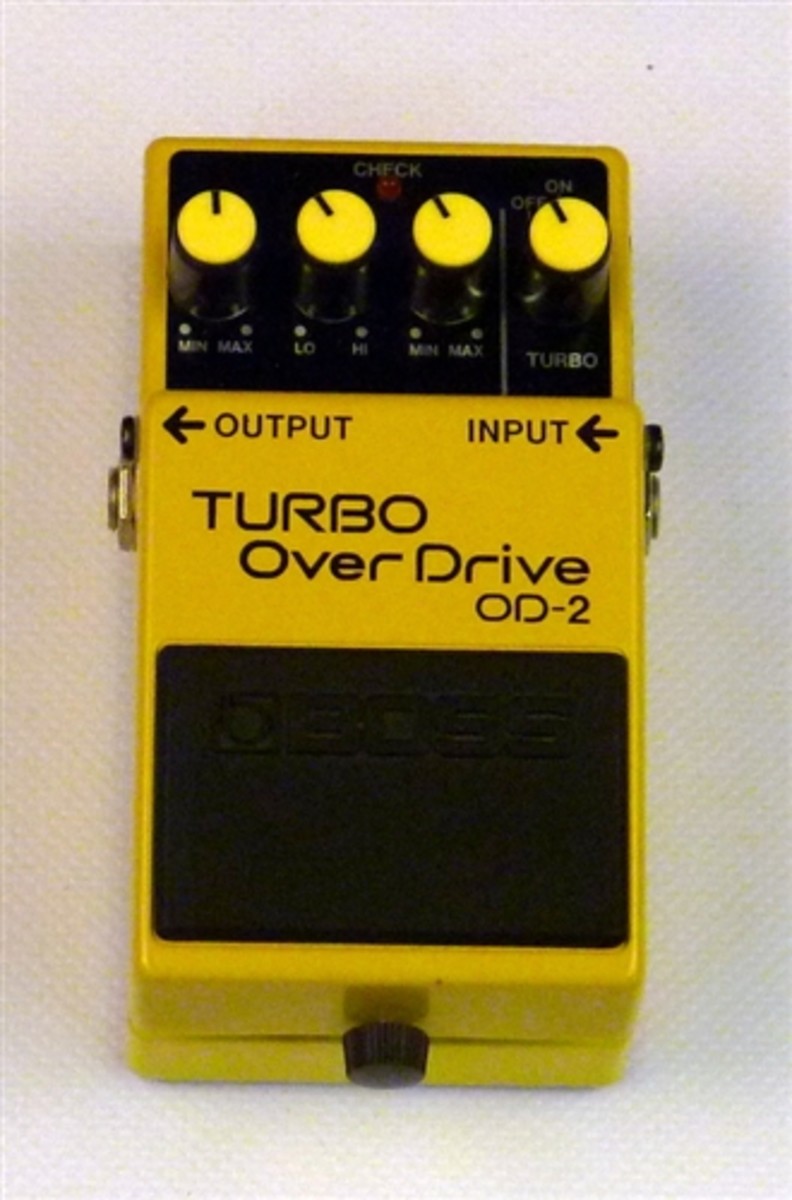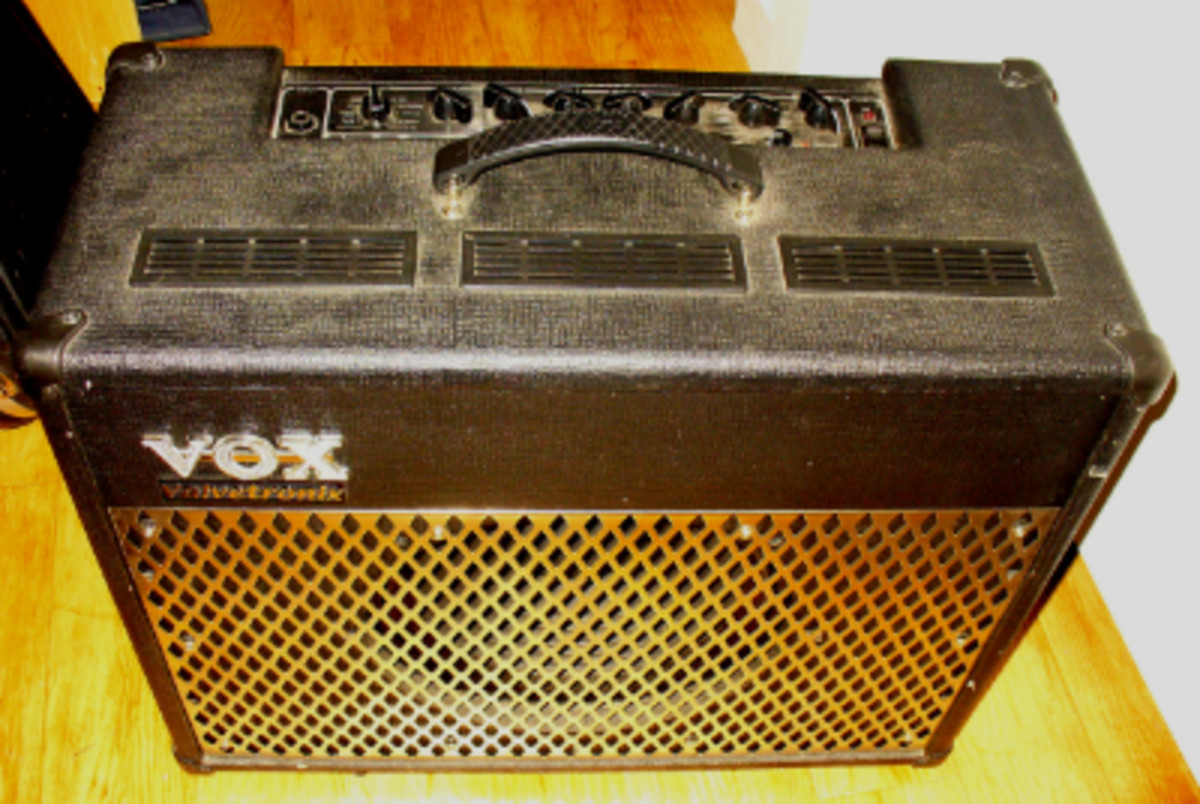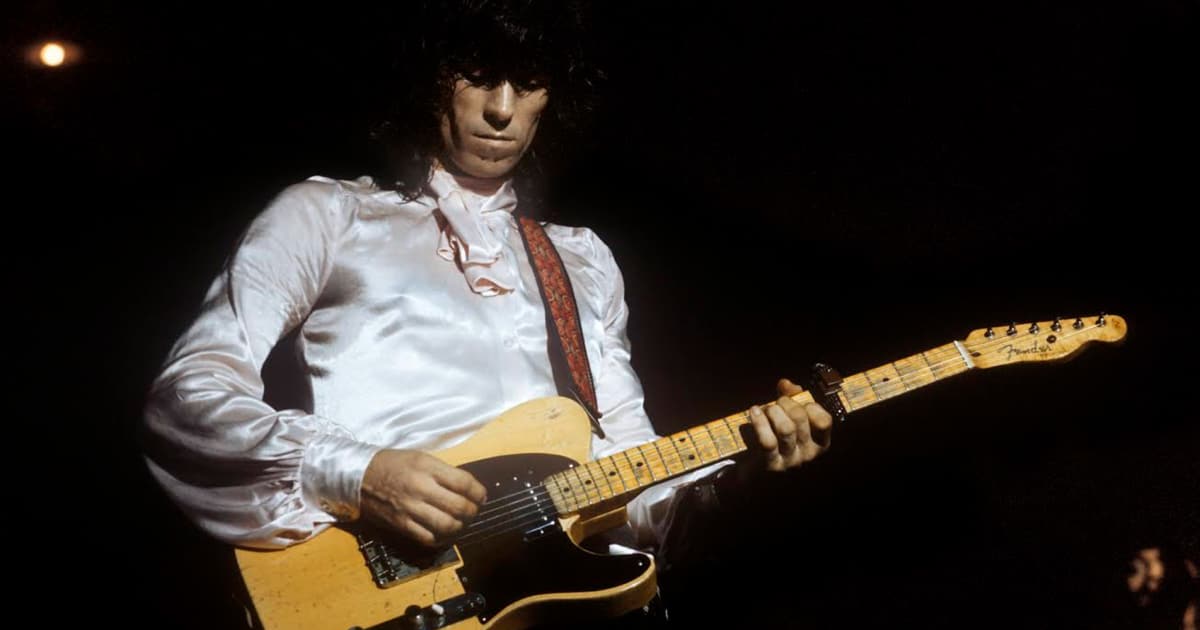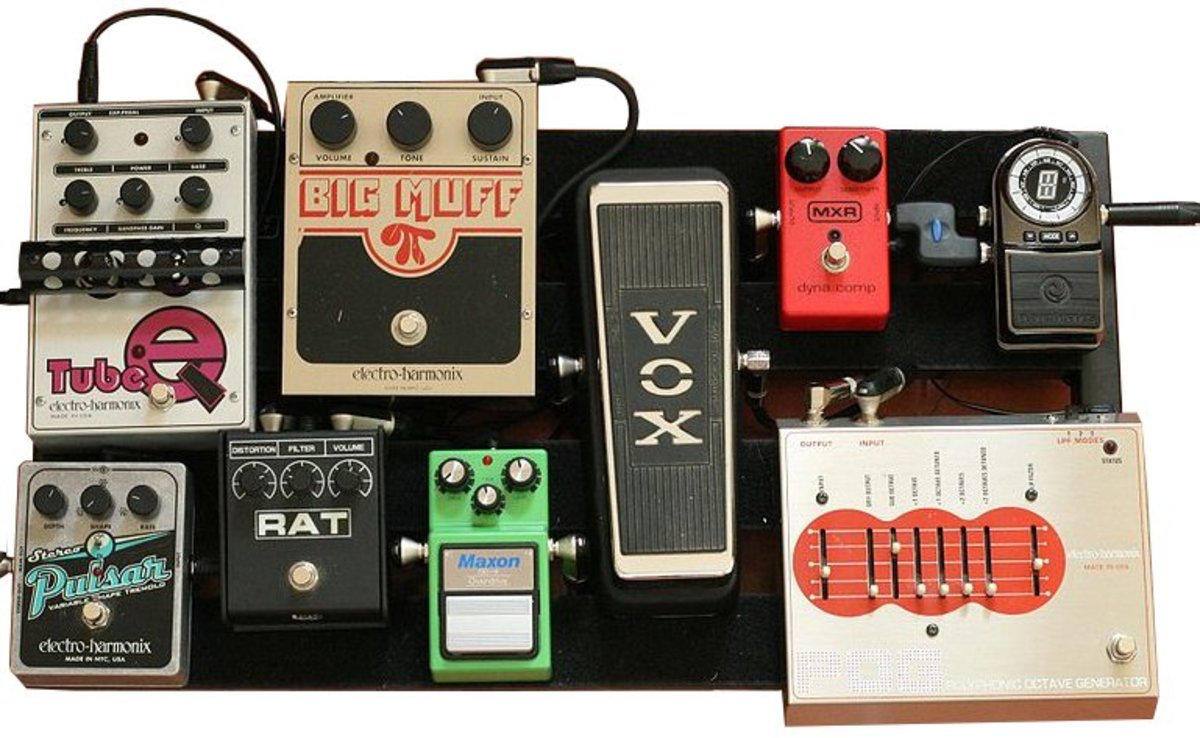Boss SD-1 Super Overdrive Pedal Review
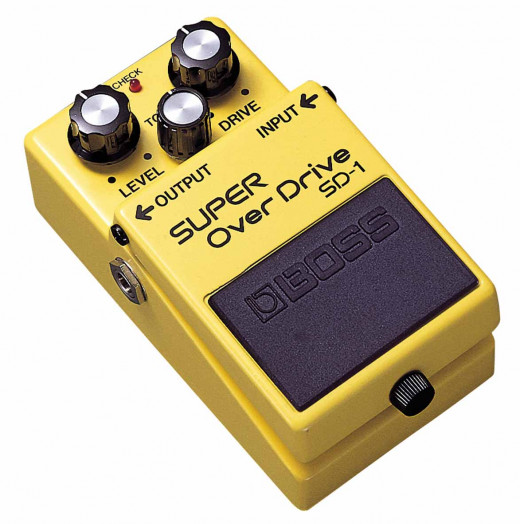
Overview
Standard Retail Price: $49
Typical Used Price: $20 to $30
Controls: Level, Tone, Drive
Power: 9-volt battery or PSA adapter
Famous Users: The Edge (U2); Zakk Wylde (Ozzy Osbourne, Black Label Society); Johnny Greenwood (Radiohead)
Further Information: The Official Boss Website; BossArea.com
Overall Value
First Impression
The thing I might find most annoying thing about the Boss SD-1 Super Overdrive is the fact that it took me about 15 years to figure out that this pedal--which is available in just about every music store in the world for less than $50--creates the exact overdrive sound I’d been searching for since I first picked up an electric guitar.
You may not realize it, but you’ve heard the Boss SD-1 on hundreds of records since its initial appearance on the market in 1981. Originally designed as a booster for tube amps, users of the Super Overdrive quickly realized that the pedal can be used to create crunchy rock tones at relatively low volumes by plugging a guitar into it, running the from the pedal into an amplifier’s clean channel, and then turning up the “Drive” knob.
The SD-1 is most often compared to the Ibanez Tubescreamer, but in fact it differs from the TS series because it utilizes asymmetrical clipping, versus the Ibanez’s symmetrical clipping. So what does this mean? Quite simply, the Super Overdrive’s sound (while still fairly smooth) is slightly more aggressive-sounding or gritty than the Tubescreamer.
Some players have noted that they have noticed that the SD-1 has a notable “hump” in the mid-range frequencies when the pedal is activated. This EQ quirk is somewhat controversial, with some players claiming it makes the Super Overdrive virtually useless while others consider it an ingenious feature.
Ease of Use
It would be difficult to imagine a more user-friendly pedal than the SD-1. With three control knobs and the standard Boss-style wide (non-button) footswitch, the Super Overdrive is about as basic a design as is available.
Turning the pedal on and off is as easy as stepping on the lower-half of the pedal, denoted by the black rubber pad. The footswitch is silent and arguably one of the Boss company’s greatest contributions to the world of pedals–it’s very easy to find with the foot while playing, even on a dim or dark stage. Additionally, the flat footswitch makes it possible to step on and activate/de-activate multiple pedals simultaneously.
- The “Level” knob controls the volume of the signal when the pedal is engaged (as denoted by the red LED lighting up). Gain unity–where the uneffected guitar signal volume when the pedal is off matches the volume of the guitar when the pedal is on–occurs between 11 and 12 o’clock. This means you can crank the Level knob past the halfway point to get a jump in volume when you step on the pedal.
- The “Tone” knob colors the sound of the guitar signal when the pedal is engaged. Turning the Tone knob to the left bumps the bass frequences while de-emphasizing the treble frequencies; turning the Tone knob to the right raises the treble frequencies and filters out the bass frequencies.
- The “Drive” knob dials in the amount of gain (or overdrive) added into the guitar signal when the pedal is turned on. With the Drive knob all the way to the left, there is no gain added to the signal (and, therefore, no or very low guitar volume); turning the Drive knob all the way to the right will produce a fairly saturated guitar sound remiscient of the sound of a cranked tube amplifier.
Performance
In spite of the fact that the SD-1 is inexpensive and mass-manufactured, it remains my favorite overdrive pedal of all time. Here’s why:
One of the problems with dirtboxes is that many of them sound great when it’s just you, your guitar, your amp and the pedal. It’s often quite easy to coax a tone out of an effects unit that sounds great out of context. But putting that same pedal into action in a live-band or recording scenario is a whole different situation. It’s not unusual to find that the tones that sounded great while jamming by oneself are borderline unusable in a rehearsal room where a drummer, bass player, singer, or any other instrumentalist is also present.
Remember that “mid-range hump” that was mentioned earlier? Well, for every guitarist who hates the SD-1′s tendency to nudge these frequencies, there are an equal number who realize that this is a pretty easy way to avoid having your guitar get lost in a mix–without having to keep turning your volume up. I’ve been in bands where one guitar player’s amp was dimed and he was borderline deafening, but because his dirty sound was so close to the bass player’s frequencies, everyone was having a hard time hearing him! It sounds impossible, but it’s a pretty common issue.
The Boss Super Overdrive’s sound tends to cut right through a mix at reasonable or even low volumes. I’ve never had a problem hearing myself playing with this pedal engaged; it’s pretty bright-sounding. Also, the Drive/gain level never gets so saturated that one has to worry about losing articulation. Whether I’m cranking out Who-style power chords or chiming U2-esque delayed arpeggios, hearing the notes in each voicing isn’t an issue with the SD-1.
I’ve employed my SD-1 with solid state, hybrid and tube (valve) amplifiers and I will say that I had the best experience with the hybrid and tube amps.
The solid state amplifier I used was a Roland Jazz Chorus 120. Anyone familiar with this amp probably knows its strengths and weaknesses, and we’ll talk about those in another review. But the SD-1 sounded like a far higher-gain pedal than it really is through the JC-120′s super-clean 2×12″ speakers. Rather than the typical creamy, slightly-aggressive semi-distorted tone I was used to getting from the pedal, the Roland made it sound far too close to metal for my tastes.
The hybrid amplifier I tried was a Vox AD50VT (the 1×12″ model with the chrome grill). Again, the amp itself will be discussed in a separate review at some point, but with the SD-1 running between my guitar and the amp’s input, I was able to dial in fairly pleasing drive sounds. With all of the amp models I switched between, there was a little bit of solid state sizzle in the treble frequencies that I couldn’t quite get rid of without turning the Super Overdrive’s Tone knob down to the point where it sounded muffled and indistinct, so I decided I could live with a little of that harshness in exchange for the other tonal benefits of using the pedal.
Finally, I’ve run the SD-1 through several tube amplifiers with tremendous success: a Vox AC-15CC2, a Vox AC-30TB, a Fender Hot Rod Deluxe, and a Blackstar HT-20 combo. Each time, the result was more or less the same–which is to say, a thick, driven-yet-clear sound with some British-sounding “clang” when strumming ringing chords, and a bit of nasty grind when digging into the strings for leads.
Additionally, I’ve used the pedal with several guitars, including my main one, a MIM Fender 70s Stratocaster Reissue (made of the guts of several 70s Strat RIs, with a DiMarzio FS-1 pickup in the bridge position); a 1999 Fender American Telecaster, all stock; and a Gibson Explorer, all stock, year unknown. In each situation, the SD-1 responded by consistently producing a fairly transparent tone that retained each guitar’s unique characteristics, but mixing in that special bold drive flavor that is so particular to the pedal.
Conclusion
Here’s a weird little post-script to my review: my last band was in a studio recording four songs for an EP. The producer brought along some of his gear just so we’d have more options available, including a Japanese version of the SD-1 manufactured in the early 1980s. Upon learning that my SD-1 was a late 2000s Taiwan-made version, he was eager to A/B the two, insisting his would have a much better tone. When we set them up side by side, running through his AC-15 with my George L cables, we were both very surprised: there was absolutely zero difference in the sound.
While I have no doubt that the vintage pedal was made with higher quality parts, it had no discernable effect on the tone whatsoever. In fact, we ended up using my pedal on two songs, and his on two others just as an experiment–and to this day, I know which is which but nobody who claims to be able to tell the difference between the Japanese and Taiwanese models has ever correctly identified them from the recordings! (We recorded and processed the main guitar tracks on each song exactly the same way, using the same mics, preamps, and effects in post.)
So if someone ever tries to convince you that the MIJ version of the SD-1 is worth paying more for, my only advice is to get your hands on a vintage one and a modern one and trust your own ears over message board hype…
